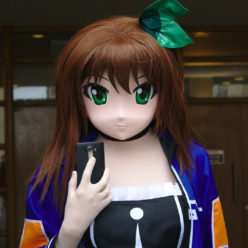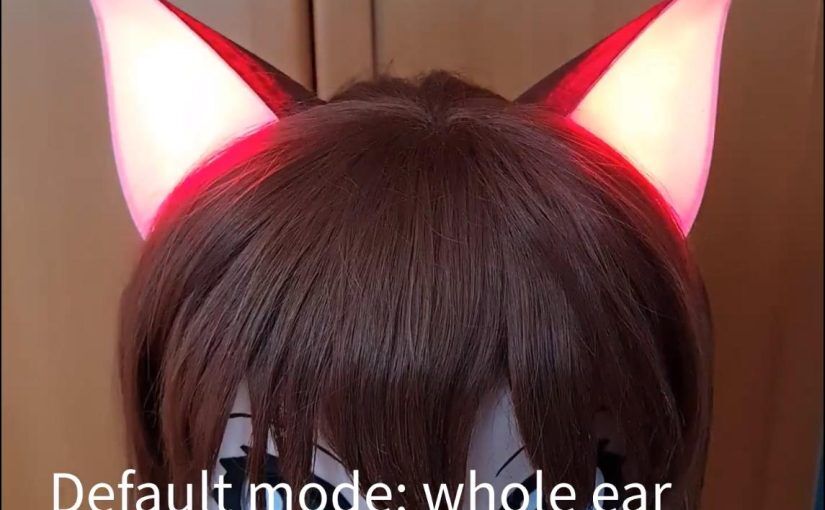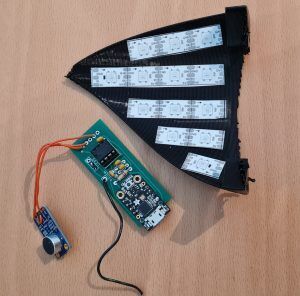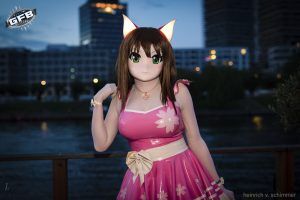I love LED sound reactive things. And by that I mean properly sound reactive, not randomly flashing like a wedding DJ sound rig, but reacting to the bass beat. I previously made a skirt that did this, and a bag, and even updated a pair of cat ear headphones. For GFB I wanted to make it more seamless by making cat ears for Yui that attach and don’t need a headphone band.
I’ve been using a hardware spectrum analyser in the past because it just works great and doesn’t need any complex microprocessor to do real time audio capture and FFT. To be fair these days the ESP32 is more than capable of fast DMA audio capturing and FFT (WLED has some interesting sound reactive code but it would need a little tweaking), so it was just quicker just to use one of the boards I had previously designed and had made and already built for the cat ear headphones and just update my existing code.
The first step of the project was to design a suitable sized cat ear in Fusion 360, this took much longer than imagined as that software has a bit of a learning curve, especially when wanting to make more organic shapes, fit over a curved kigu head, and have covers that clip over the electronics. The final design has an inner part we can stick the LEDs to and an outer cover with a 1cm air gap to give some reasonable diffusion. (For even better diffusion, wow_elec_tron does some amazing work on figuring out the best LED diffusion using 3d printed channels).
I had some addressable LED strips left over and cut up to give 13 LEDs per ear. Adding more LEDs, using 35mm ones instead of 50mm, would give a better density and allow more fancy animations, but this was a deliberate trade-off: in a dark environment you want the ears to be noticable, but not so bright they are annoying to others. And I wanted to make sure I could get at least 3 hours of run-time including running a cooling fan for the mask from a small rechargable battery. I use a good quality phone-bank style battery based internally on a 18650 cell to minimise the risk of issues having a rechargable battery close to your head (I’ve had enough LIPO problems not to want those anywhere near my head).
The final setup for GFB is shown above, with a small switched fan for mask cooling. The battery power splits to the right ear which has all the electronics, and the left ear which just has LEDs. A third (yellow) wire links the two ears to pass on the control to the LEDs in left ear. Threaded inserts allow the inside section to attach with M4 screws through holes in the mask, and the cables run through the wig. A small switch pokes out the side of the right ear allowing mode changes. The covers clip on and were painted to match brown hair. Originally the plan was to glue the covers onto the inserts, but it’s easier to attach the ears without the covers, and we can always change the covers later to add furry ones or even latex ones. Finally a small clip (not shown) was hot-glued into the mask to take the battery.
The code is just updated version of the one used for the skirt (will update the github code in the future), with the switch allowing cycling between off, a photo mode (which just slowly changes colours without flashing), and several beat mode animations.
Photo: Heinrich v. Schimmer, www.schimmerandsisca.de
Its hard to take video at an event without getting other people in the background, and you also get copyright music. See the start of this post for a demo with my own music.






